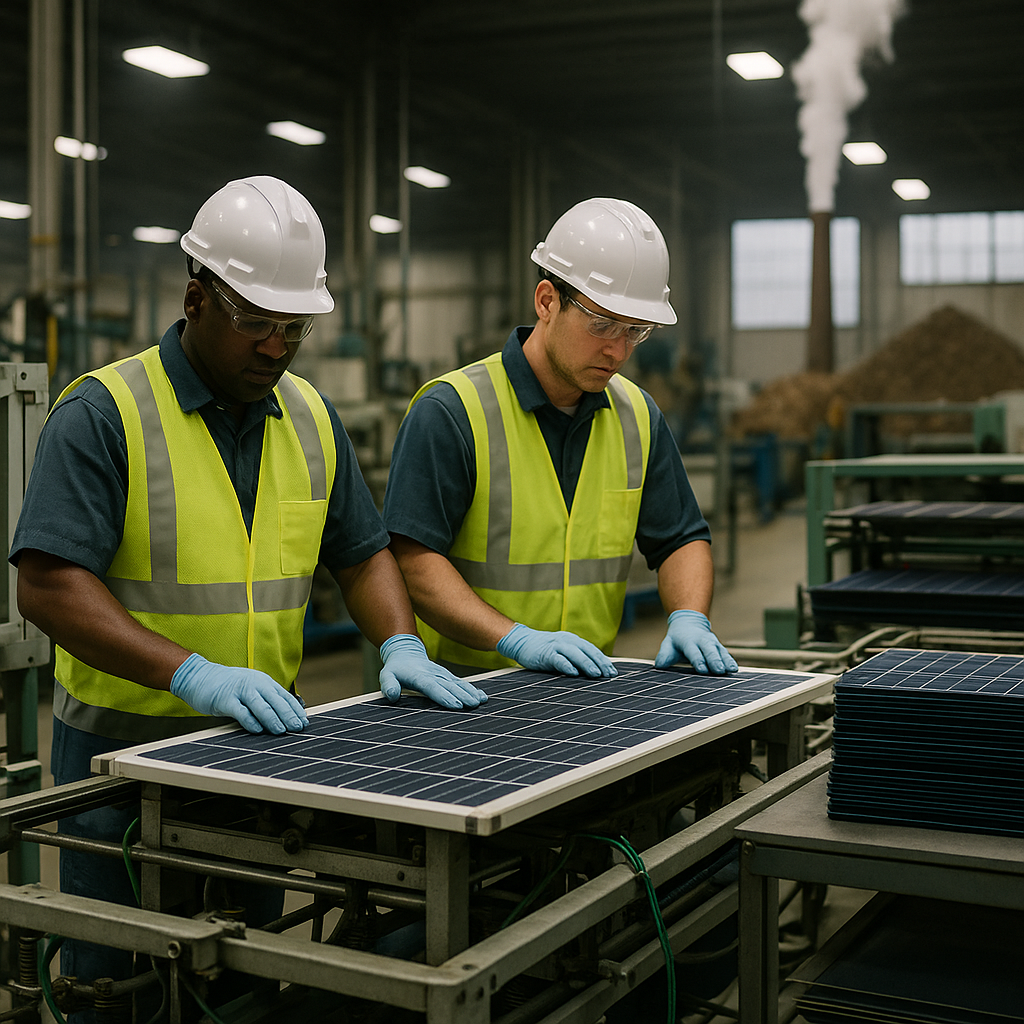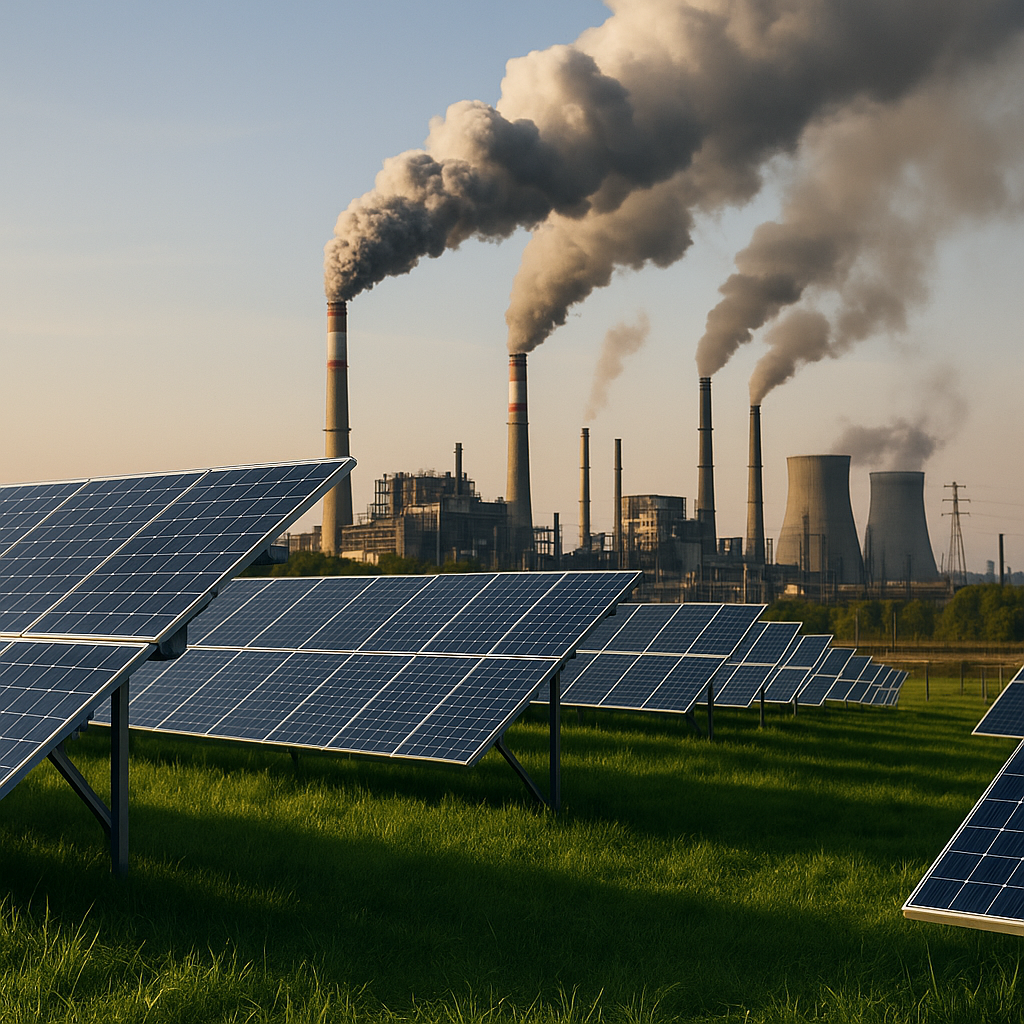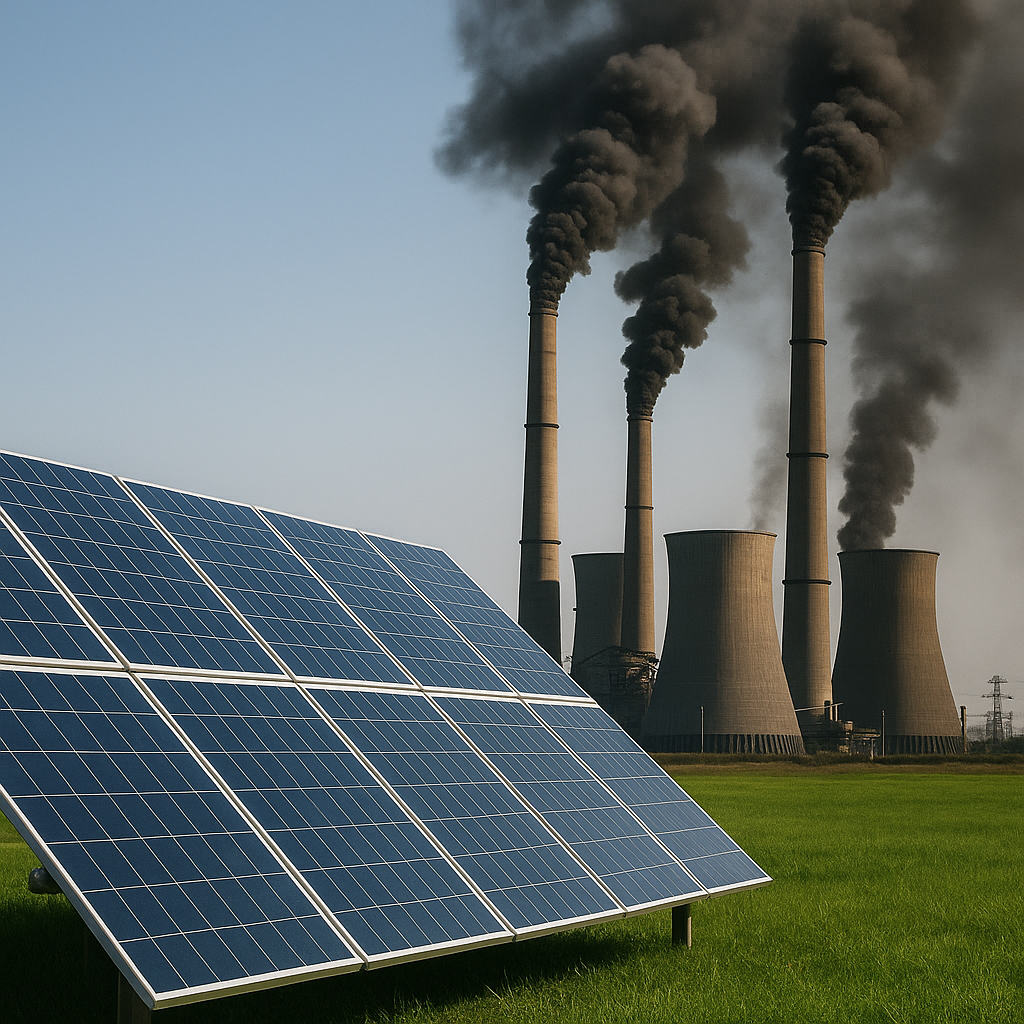5901 Botham Jean Blvd, Dallas, TX 75215
Exploring the Environmental Impact of Solar Panels: A Quick Overview
September 12, 2025Is solar energy truly as green as we believe? While solar panels generate clean electricity without emissions, their journey from creation to installation reveals a more complex environmental story.
Solar panels offer a powerful solution to reduce carbon emissions in our energy systems. They transform abundant sunlight into electricity without burning fossil fuels. However, the full environmental impact of solar panels extends beyond their operation.
The environmental footprint begins with raw material extraction. Mining for silicon, silver, and other metals can disrupt habitats and requires significant energy. Manufacturing processes involve hazardous chemicals and substantial water usage, especially in solar-grade silicon production. Land use also presents a consideration, as large solar installations can occupy significant space that might otherwise serve wildlife or agriculture. Finally, when panels reach their end of life after 25-30 years, important questions about waste management and recycling capabilities arise.
How Does Solar Panel Production Affect the Environment?

The journey from raw materials to finished solar panels involves complex processes with significant environmental impacts. While solar energy itself is clean and renewable, the production phase poses several ecological challenges worth examining.
Mining operations for key materials are the first environmental hurdle. Extracting silicon requires substantial land disturbance, with quartz mining altering natural landscapes and potentially disrupting local ecosystems. Mining other essential materials like silver, aluminum, and copper also contributes to habitat destruction, soil erosion, and water pollution.
The refining process for silicon is particularly energy-intensive. Purifying silicon from quartz necessitates extreme temperatures between 1,500-2,000°C, consuming large amounts of electricity, often sourced from coal-fired plants. This is especially the case in China, where over 90% of the world’s polysilicon is produced. A standard solar panel contains about 6-8 grams of silver, with each kilogram of mined silver generating significant carbon emissions.
Manufacturing processes introduce additional environmental concerns. Transforming raw silicon into solar-grade material demands temperatures exceeding 1,500°C, consuming significant electrical power. This energy-intensive process accounts for approximately 40% of the total energy used in panel production. Monocrystalline panels, known for their higher efficiency, require more energy to produce than polycrystalline alternatives due to the Czochralski technique, which melts silicon at temperatures above 1,400°C.
Chemical usage presents another environmental challenge. Panel production involves potentially hazardous substances, including lead in solder connections and, in some thin-film technologies, toxic elements like cadmium. These chemicals require careful handling to prevent worker exposure and environmental contamination.
Transportation further increases the carbon footprint. Most panels are manufactured in China but installed worldwide, requiring extensive shipping that generates additional emissions. Transporting panels from production facilities to installation sites can produce considerable CO2 per kilometer traveled.
Despite these concerns, solar panels have a relatively quick environmental payback period. Modern panels typically offset their production emissions within 1-4 years, depending on installation location and manufacturing conditions. After achieving carbon neutrality, panels continue generating clean electricity for 20-25 years or more. Studies indicate that solar energy produces about 50g of CO2 per kilowatt-hour during the first year of operation, compared to 800-1000g for coal and 400-500g for natural gas.
The industry is actively working to reduce environmental impacts. Many manufacturers now implement water recycling systems that can decrease freshwater consumption by up to 90%. Advanced mining techniques incorporate habitat restoration programs, and some companies are developing silicon purification methods using renewable energy instead of coal-fired furnaces. Recycled silicon technology, which reuses materials from electronic waste and decommissioned panels, can decrease the energy payback time by up to 30%.
Low-temperature processing represents another significant advancement, enabling production at 200-400°C instead of the traditional 800°C or higher. This innovation reduces energy consumption during manufacturing by approximately 40%, further improving the environmental profile of solar technology.
[[artifact_table]] Environmental Impact Comparison: Solar vs. Conventional Energy Sources [[/artifact_table]]How Do Solar Panels Compare to Fossil Fuels Environmentally?

When comparing the environmental impact of solar panels to fossil fuels, the difference is clear. Solar photovoltaic (PV) systems produce about 40 grams of CO2 equivalent per kilowatt-hour (gCO2e/kWh) over their lifecycle, while coal-fired power plants generate approximately 1,000 gCO2e/kWh. Natural gas plants fall in between at roughly 490 gCO2e/kWh. Consequently, coal produces 25 times more carbon emissions than solar for the same electricity output.
Critics sometimes highlight the manufacturing process of solar panels as environmentally problematic. However, this initial carbon footprint is quickly offset once panels are operational. The energy payback period—the time it takes for solar panels to generate the same amount of energy used in their production—is just 1-2 years. With modern solar panels lasting 25-35 years, they operate for over 90% of their lifespan producing clean electricity.
Beyond carbon emissions, solar energy offers further environmental advantages. Unlike fossil fuel extraction, which involves mining, drilling, and extensive land disruption, solar installations are typically non-invasive. Additionally, solar panels operate without water consumption for electricity generation, while coal and natural gas plants require substantial water resources for cooling.
The environmental benefits of solar extend to direct heat emissions as well. Research from Stanford University indicates that solar PV systems produce negative heat emissions because they convert sunlight to electricity, effectively cooling the ground or building beneath the panels. In contrast, fossil fuel plants release significant heat during operation, contributing to local temperature increases.
Technological innovations continue to improve solar’s environmental profile. Manufacturers are increasingly powering production facilities with renewable energy, enhancing panel efficiency, and developing advanced recycling processes that can recover over 90% of panel materials. These advances further reduce the already-low carbon footprint of solar energy.
As global electricity demand increases, the cumulative environmental benefit of choosing solar over fossil fuels becomes even more significant. The International Energy Agency predicts that renewables will constitute 80% of new capacity additions by 2030, with solar accounting for most of this growth.
The environmental comparison between solar panels and fossil fuels underscores solar’s role in addressing climate challenges. While no energy source is entirely impact-free, solar energy represents a dramatic improvement over conventional fossil fuels across almost all environmental metrics.
What Happens to Solar Panels at the End of Their Life?

Designed to operate for 25–35 years, solar panels face important waste management and recycling questions at the end of their lifespan. As global adoption accelerates, the International Renewable Energy Agency (IRENA) projects that by 2050, decommissioned solar panels could generate up to 78 million metric tons of waste worldwide. Without effective recycling strategies, this increase in discarded panels risks creating a new category of electronic waste.
Currently, most retired panels are sent to landfills, where components such as glass and aluminum slowly degrade while more hazardous elements—including lead solder and cadmium in some thin-film models—pose risks of leaching into soil and groundwater. Recovering valuable materials is possible, but specialized recycling processes are needed. A typical solar panel is about 75% glass, 10% plastic, 8% aluminum, and 5% valuable trace materials like silver and silicon. When properly recycled, over 90% of these materials can be reclaimed for use in new panels or other products.
Several countries are taking steps to address this challenge. The European Union has classified solar panels as electronic waste, requiring manufacturers to finance collection and recycling. In the United States, however, regulations vary by state, and nationwide recycling infrastructure remains limited. This inconsistency makes it harder to scale sustainable disposal solutions.
On the technological front, researchers are developing more efficient panel recycling methods, such as thermal treatments that cleanly separate silicon wafers from glass, or chemical processes that recover high-purity silicon suitable for new photovoltaic cells. These innovations could reduce the environmental footprint of panel production by decreasing demand for virgin mining and refining. Some manufacturers are also experimenting with “design for recyclability,” creating panels that use fewer toxic materials and can be disassembled more easily at the end of their service life.
Recycling solar panels effectively is not just an environmental imperative—it also represents a major economic opportunity. The recoverable materials in decommissioned panels could be worth billions of dollars by mid-century. Establishing robust recycling systems today will help ensure that the solar industry remains sustainable for decades to come, reducing reliance on newly mined resources.
What Are the Future Challenges and Opportunities for Sustainable Solar?

Solar energy is at a crucial point. While it offers one of the most eco-friendly options among energy sources, the industry faces significant challenges in maximizing its environmental benefits. A major issue is enhancing solar panel recycling systems to reduce electronic waste and recover valuable materials. Despite the increasing volume of panels reaching end-of-life status, current recycling infrastructure remains underdeveloped.
Technological innovation brings both challenges and opportunities. The development of less toxic and more efficient solar technologies is progressing, although financial barriers can hinder implementation. The industry must balance the immediate need for rapid deployment with the long-term goal of establishing more sustainable manufacturing processes that reduce environmental impact.
Circular economy approaches present a promising opportunity, allowing materials to be reused instead of discarded. Moreover, wildlife-friendly solar designs and improved integration with energy storage technologies can address concerns about land use and intermittency. These innovations will require strong policy support for sustainable manufacturing and responsible deployment to truly fulfill solar energy’s environmental potential.
For organizations looking for professional recycling solutions for their solar panels or other materials, contact Okon Recycling at 214-717-4083.
